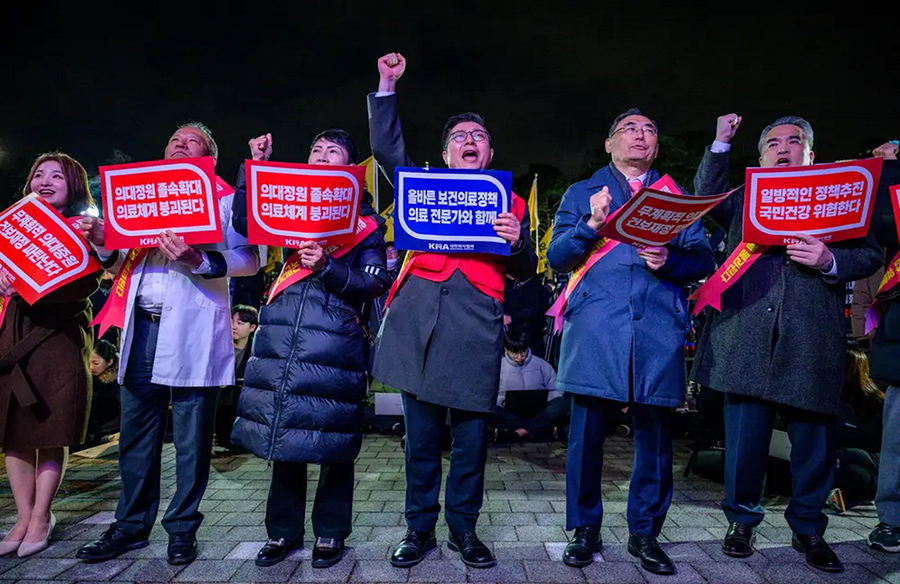Trainee doctors in South Korea have staged a mass walkout to protest against a government proposal to increase medical school enrolment quotas, leading to significant disruptions in the country’s healthcare system.
Walkout and Resignations
Over 1,600 trainee doctors participated in the walkout, with an additional 6,400 tendering their resignations across 100 hospitals, accounting for nearly half of all trainee doctors in South Korea. This widespread action has raised concerns about potential disruptions to an already strained healthcare system.
Manpower Shortage
South Korea faces a shortage of doctors, with only 2.6 doctors per 1,000 people, significantly below the OECD average of 3.7 per 1,000 people. The government’s plan to increase the medical school quota from 3,000 to 5,000 annually aims to address this shortage, particularly in rural areas and specific medical specialties like emergency medicine.
Differing Perspectives
While the public generally supports the government’s initiative, doctors argue that the issue lies not in a general labor shortage but in specific specialties and regions due to low wages and challenging working conditions. Many trainee doctors endure grueling shifts exceeding 24 hours and work over 80 hours per week, raising concerns about the quality of education and patient care.
Calls for Resolution
Government officials have urged the protesting doctors to return to work, emphasizing the importance of maintaining healthcare services for the public. South Korea’s second vice health minister, Park Min-soo, expressed disappointment over the situation and appealed to doctors to reconsider their decision to resign en masse.
Historical Context
This is not the first time South Korean doctors have protested against plans to expand medical school quotas. In 2020, young physicians went on strike to oppose a similar proposal, leading the government to backtrack on its plans in response to pressure from the medical community.
In conclusion, the standoff between South Korean trainee doctors and the government underscores the complex challenges facing the healthcare sector, including workforce shortages and concerns about education quality. Achieving a resolution will require careful consideration of the interests of all stakeholders to ensure the provision of high-quality healthcare services for the population.




Leave a Reply